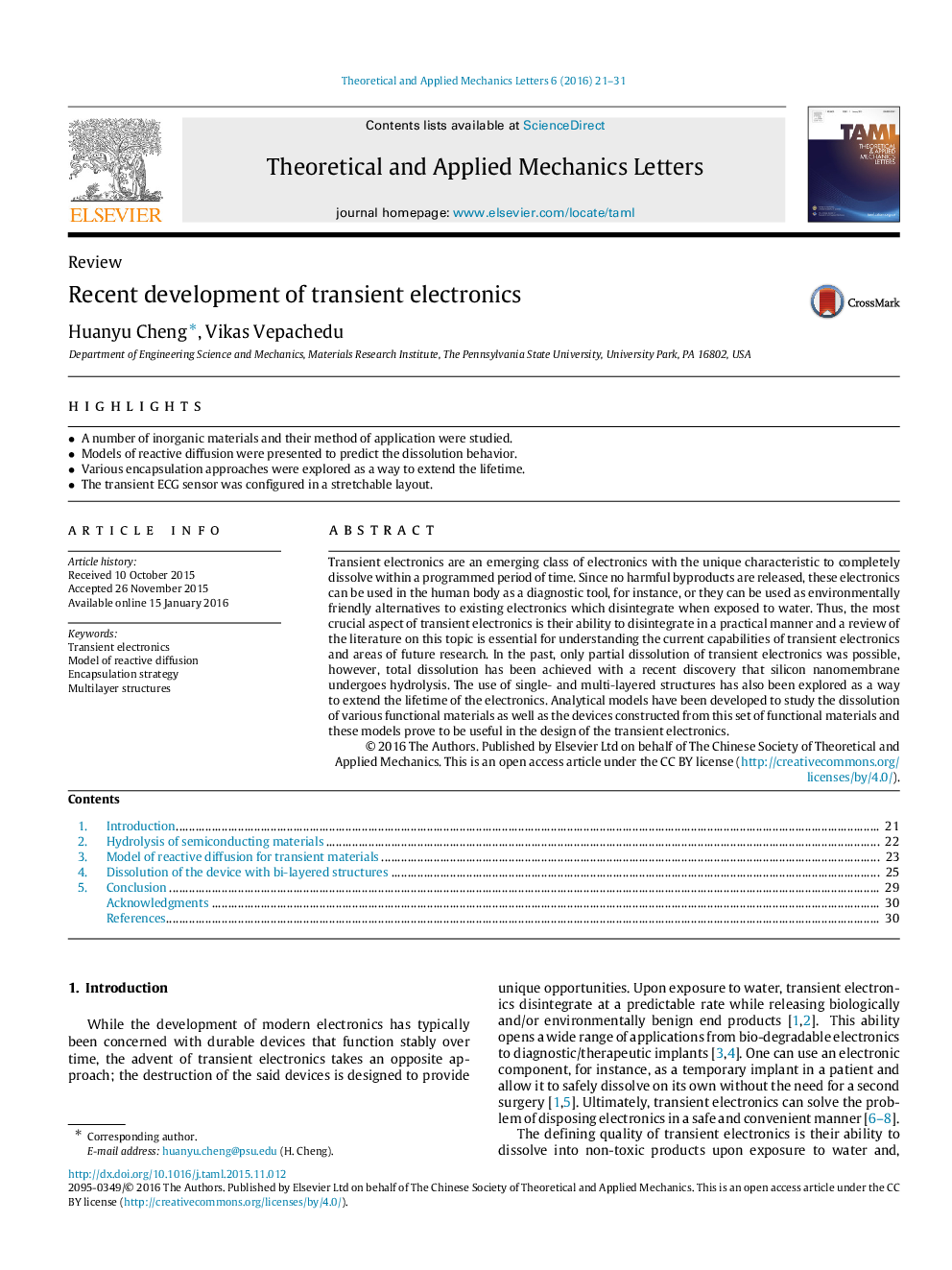| Article ID | Journal | Published Year | Pages | File Type |
|---|---|---|---|---|
| 807640 | Theoretical and Applied Mechanics Letters | 2016 | 11 Pages |
•A number of inorganic materials and their method of application were studied.•Models of reactive diffusion were presented to predict the dissolution behavior.•Various encapsulation approaches were explored as a way to extend the lifetime.•The transient ECG sensor was configured in a stretchable layout.
Transient electronics are an emerging class of electronics with the unique characteristic to completely dissolve within a programmed period of time. Since no harmful byproducts are released, these electronics can be used in the human body as a diagnostic tool, for instance, or they can be used as environmentally friendly alternatives to existing electronics which disintegrate when exposed to water. Thus, the most crucial aspect of transient electronics is their ability to disintegrate in a practical manner and a review of the literature on this topic is essential for understanding the current capabilities of transient electronics and areas of future research. In the past, only partial dissolution of transient electronics was possible, however, total dissolution has been achieved with a recent discovery that silicon nanomembrane undergoes hydrolysis. The use of single- and multi-layered structures has also been explored as a way to extend the lifetime of the electronics. Analytical models have been developed to study the dissolution of various functional materials as well as the devices constructed from this set of functional materials and these models prove to be useful in the design of the transient electronics.
